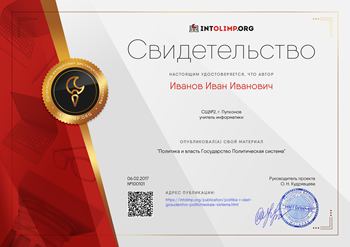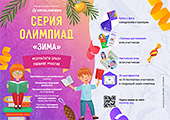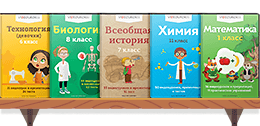Поурочный план
| Предмет: | Базовый иностранный язык |
| Группа: | Гр 122 («Переводческое дело») |
| Время: |
|
| Тема урока: | The text “the Pessimist’s phrase book”. Will/won’t contractions; opposite verbs |
| Цели и задачи урока по формированию компетентностей: А) по решению проблем Б) информационной В) коммуникативной | Определить цель своей деятельности в рамках данной темы, рассматривать вопрос для обсуждения как психологическую проблему Планировать и осуществлять познавательную деятельность учащихся для достижения информационного поиска, а именно: прочитать статью, извлечь необходимую информацию для дальнейшей его обработки при выполнении соотвествующих заданий, получить информацию о грамматическом материале Will/won’t и opposite verbs, об их правильном употреблении в устной речи и при письме. Развивать знания, умения и навыки студентов, посредством выполнения заданий, включая творческие, развивать критическое мышление посредством улучшения навыков чтения и говорения, учитывая специальность обучаемых работать над аудитивными навыками, обеспечить выход к свободному иноязычному общению в рамках данной темы, развивать навыки оформления своих мыслей в форме речевых образцов. |
| Тип урока: | Урок усвоения новых знаний |
| Технологии, применяемые на уроке: | технология сотрудничества, технология развития критического мышления через обучение чтению и письму |
| Методы: | наглядный, словесный, практический, объяснительно-иллюстративный, проблемный |
| Межпредметная связь: | Психология, практикум устной и письменной речи, география, самопознание |
| Средства обучения: | ИКТ, учебник, раздаточный материал, иллюстративный материал |
| Ход урока: | Деятельность учителя | Деятельность ученика | Ожидаемые результаты |
| студент | |||
| І. Warming up: 1. Organization moment: | All rise! Good afternoon, dear students! How are you today? Hope everybody is fine. Ok, good! Let’s start our lesson then. | To stand up and greet the teacher, to show their readiness for the class. - Good afternoon, dear teacher! | The students stand up and greet the teacher, preparing the room for the lesson, the students are ready for the class. |
| 2.Phonetic drill: | A twister of twists once twisted a twist. and the twist that he twisted was a three twisted twist. now in twisting this twist, if a twist should untwist, would the twist that untwisted untwist the twists. | They have to repeat after the teacher without any mistakes | The students have repeated after the tutor, they’ve trained their tongues |
| III. Checking up the home-task: | 1) At our previous class we were talking about Airport stories and now I wonder them. (the teacher is checking every student by means of listening to his /her story) Ok, dear students! As I see you have prepared your task for today. Thank you very much! But tell me please why are they called “Airport stories”? Who tells them? Right you are! | They have to answer the teacher’s questions, setting their own examples They are to tell their own airport story They are called so because they happen at the airport. | They set their own examples about different airport stories. They told their own airport story They are aware of the content of the story |
| ІV. Rounding –up the previous material and preparing for the new one: | We have talked a lot about travelling, Airport stories. Some of them are funny, some of them are not. But we know that they are possible to happen because we all are humans. Our life is full of accidents, incidents and different coincidences. | The students share their views on such stories and their opinions about them. | The students told about their views on modern music and shared their opinions about them. |
| ІҮ. Introduction of the new material: Applying the associative method: |
And today we are going to talk about life, both its good and bad sides. Please, open your books on p 26 What do you associate with the title of this article? What do you see here? Who are these people? Ok, please look here and let’s read this article. (the text is being demonstrated on a big sensor panel and the students read it) Ok, tell me what have you learnt from it? Whom do we call pessimists? Ok, and what is the opposite to pessimist? Right you are! Now retell it please! 2) Introduction of the new grammar material: | We see two people talking about something. They have to read the article Have to share their ideas about it Pessimists are those people who don’t believe in bad things to happen - Optimist The students have to retell the article as close as they can They must study the given material. They must study the given material and do the tasks. | the students got involved into the conversation with the T about the story. They read the article and shared what they had learnt from it. They identified the meaning of the word They retold it. They knew the right order of the events in that article. They listened to the teacher and studied the given material. They studied the given material and did the tasks. |
| Ү. Consolidation of the new material: | I. Practical part: 1) Work on the vocabulary: Look at that, please. Sometimes when we talk we use opposite verbs; II. 1)doing exercises: 2) Ok, dear students! Well-done! 3) Listening part: Listening to the typescript: | The students have to look through and do the tasks The students work on the confusing verbs, matching them to the pictures They have to study and have a talk with the teacher about being positive in this life. When we are in low spirits, when we want to cheer up somebody and so on. The students must listen to the following and find the missing words: They must do the tasks according to the given instructions. The students must listen to and find the missing words:
| The students did the. given tasks The students worked on the confusing verbs. They had a talk with the teacher about being positive in this life. They know when people say the following phrases. The students listened to the following and found the missing words. They acquired listening skills. They did the tasks according to the given instructions. The students listened to and found the missing words: |
| ҮІ. Home –task and conclusion. | So, today we have talked about pessimists and optimists, how it is important to be always in high spirits. We have read the article about it, learnt a new grammar material will/ wont, did the tasks on it, listened to the tapescripts. Your hometask is WB pp 32-34. The lesson is over, thank you for having worked so well today, good-bye! | The students put down the home-task, listening to their marks. Good-bye, tutor! | The students put down the home-task, listening to their marks. They saw off their tutor. |












